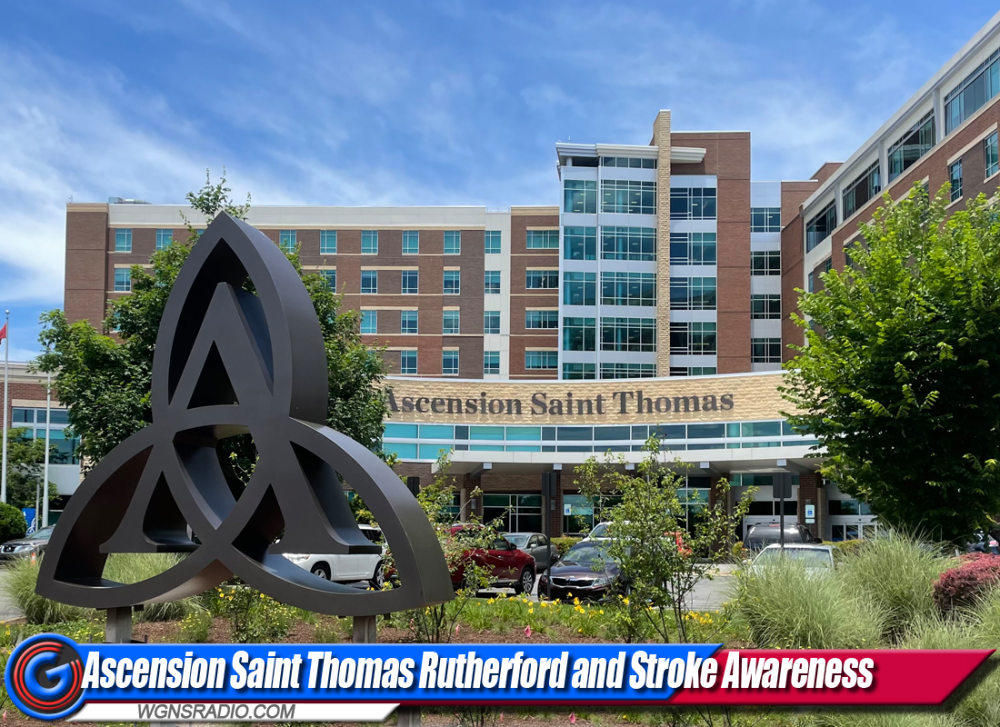SEGMENT I: In the first segment of today's program, WGNS Host Scott Walker highlighted the fact that May is “Stroke Awareness Month” as he talked to guest from Ascension Saint Thomas Rutherford Hospital. Guest included Stroke Coordinator Sylvia McLaughlin and Stroke Interventionalist Dr. Brett Doinegan. Ascension’s Sr. Public Relations Specialist Anjali Bright was also in studio with us.
SEGMENT II: During the last portion of the show, we talked to Mike Renfrow, the Deputy Executive Director of the Tennessee Valley Healthcare System. During the interview, he spoke about the importance of May also being Mental Health Awareness Month.
STROKE INFORMATION:
Warning signs are acronym “F A S T”. Is it different for MEN and WOMEN? Will drinking more water reduce your risk of a stroke? What else can you do?
Topics Covered:
Strokes happen for two different reasons. The most common cause is blood stops flowing to the brain. Blood flow is blocked by a clot, or a buildup of a fatty substance called plaque in an artery leading to the brain.
- Fears: Having a Silent Stroke
- What are some of the main stroke signs people have?
- If you have a stroke – or warning signs of a stroke – what should you do first?
- Who is at the highest risk of having a stroke?
- Who is at the lowest risk of having a stroke?
- Can you eat right, exercise and do all the right things, yet still be susceptible of having a stroke?
Common symptoms
- A feeling of numbness or weakness in your face, arm, or leg (one side might be affected more than the other)
- Vision problems in one or both eyes
- Dizziness or loss of balance;
- difficulty walking
- Confusion Problems
- speaking or understanding what other people are saying
- Severe headaches without warning or explanation
Additional symptoms in women
While women* may have the same symptoms as men*, they may also have these additional symptoms, which also happen suddenly and unexpectedly:
- Pains in the face or legs
- Hiccups
- Nausea
- Feeling weak all over
- Angina (chest pain)
- Shortness of breath
- Rapid heartbeat
FAST:
The American Stroke Association developed F.A.S.T., an easy-to-remember
acronym that can help you spot a stroke in yourself or another person.
F – Face drooping – Is one side of the person’s face drooping or numb? When the person smiles, is the smile uneven?
A – Arm weakness – Is the person experiencing weakness or numbness in one arm? Have the person raise both arms. Does one of the arms drift downward?
S – Speech difficulty – Is the person’s speech suddenly slurred or hard to understand? Is the person unable to speak? Ask the person to repeat a simple sentence so that you can listen for slurred speech.
T – Time to call 911 – If any of these symptoms are present, dial 911 immediately. Check the time so you can report when the symptoms began.




